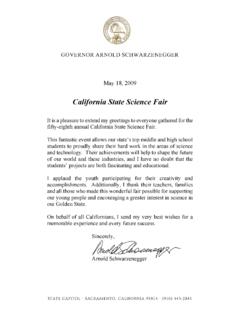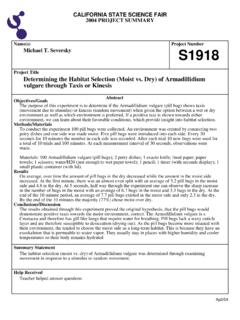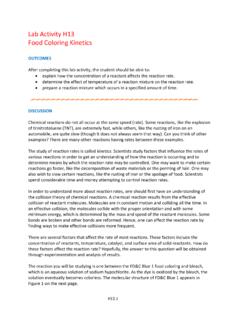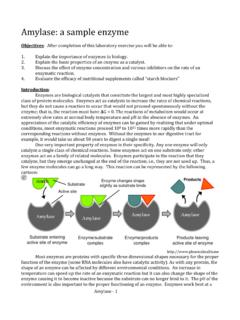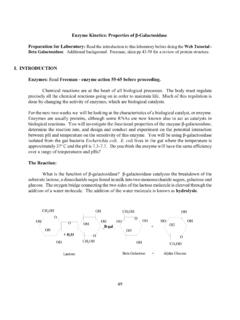Transcription of Kruthi Renduchintala J0519 - California State Science Fair
1 California State Science FAIR2011 PROJECT SUMMARYAp2/11 Name(s)Project NumberProject TitleAbstractSummary StatementHelp ReceivedKruthi RenduchintalaThe Effect of Enzyme Concentration on the Reaction RateJ0519 Objectives/GoalsEnzymes are organic catalysts that speed up reactions by decreasing the activation energy needed to startthe chemical reaction. Therefore, my hypothesis is that as the enzyme concentration increases, the speedof the chemical reaction will also increase. Using the 0% enzyme concentration should lead to the disk notrising because of the lack of reaction between the distilled water and hydrogen manipulated variable is the enzyme concentration, while the responding variable is the amount oftime it takes for the paper disk to rise to the top of the hydrogen peroxide solution.
2 First, extract thecatalase enzyme from the potato. Then dip a construction paper disk into different solutions that consist ofeither ml, 5 ml, ml, or 10 ml enzyme and enough distilled water to have a final volume of 10 , place the paper disk into a solution of hydrogen peroxide. Using a stopwatch, measure thetime it takes for the paper disk to rise to the top of the hydrogen peroxide solution. This measurement is away of recording the speed and efficiency of the rate of reaction. For each enzyme solution, take resultsfrom ten results show that as the enzyme concentration increases, the time for the disk to rise decreases. Thedistilled water, or 0% enzyme concentration, leads to no chemical reaction at all. According to thestatistical results, or standard deviations, the results of this experiment are highest catalase enzyme concentration was able to speed up the reactions by quickening the processof the disk rising.
3 When absorbed in an enzyme concentration, the disk would rise, but when dipped intothe 0 ml enzyme concentration, or distilled water, there was no reaction between the water and hydrogenperoxide, causing the disk to sink. This experiment can prove that increasing the amount of the enzymeconcentration results in a faster experiment focuses on how catalase enzyme concentration affects the reaction rate while using asubstrate of hydrogen reviewed by teacher.

